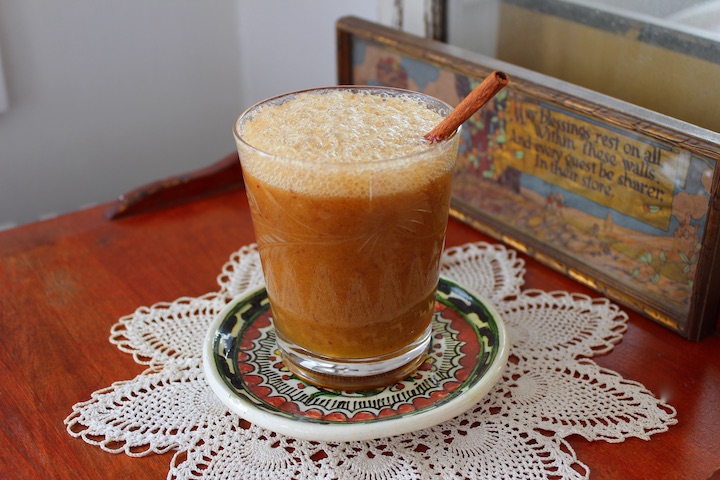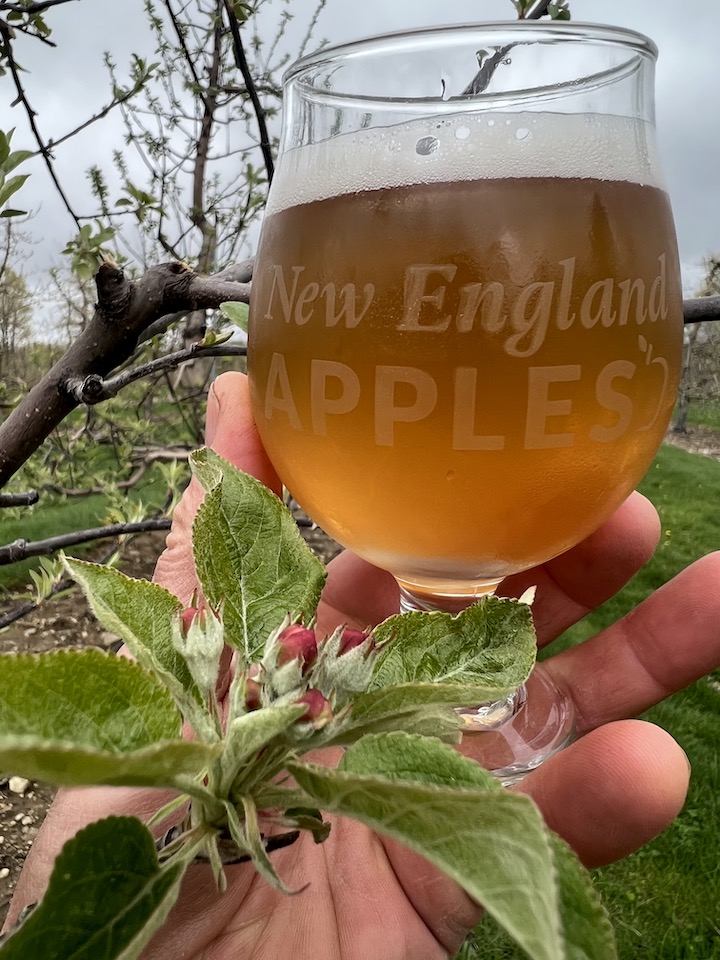
NEW ENGLAND IS ONCE AGAIN making history with cider. For nearly two centuries cider, fresh and hard, was America’s favorite drink, and its popularity is again soaring.
New England was a main producer of cider beginning in the 1700s, and is now at the heart of its revival:
- This weekend’s Franklin County CiderDays is one of the oldest and largest gatherings of cider aficionados in the country. Now celebrating its 29th year, the event features tours, workshops, special events, and tastings at venues throughout the western Massachusetts county and beyond.
Among the participating orchards are Clarkdale Fruit Farms, Deerfield, Pine Hill Orchards, Colrain, Red Apple Farm, Phillipston, and Scott Farm Orchard, Dummerston, Vermont.
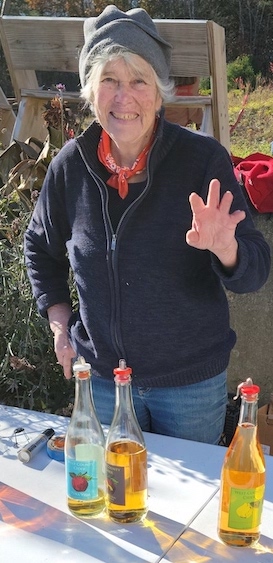
- West County Ciders of Shelburne, Massachusetts, became the first commercial maker of hard cider in the United States in 1984. Founder Judith Maloney and her son Field will be sampling and selling ciders during CiderDays.
- Eleanor Léger, founder of Eden Specialty Ciders in West Charleston, Vermont, is president of the American Cider Association. Established in 2007, Eden is a leading producer of ice ciders and heritage ciders. In 2015, Léger was a founder of the Vermont Cider Makers Association.
- At last count there were close to 100 cideries across the six-state region, plus countless amateur makers of smaller blends for personal use. Consumers can now choose from a dazzling array of sophisticated hard ciders, from sweet to dry, the vast majority made with locally grown apples.
* * *
IN ADDITION TO APPLE DRINKS like ice cider and apple brandy, which are distilled differently and have a higher alcohol content, there are two distinct types of hard cider: those that identify most closely with beer in style, price, and presentation, and ciders that are made and sold like fine wines.
Among the former is Downeast Cider, founded by two college roommates at Bates College in Lewiston, Maine. They produced their original blend in 2011 and now operate from a cider house in Boston. Downeast produces a wide range of flavored ciders, including seasonal types like cider donut and pumpkin.
Downeast Cider’s main distinction is that its ciders are all unfiltered; its labels include instructions to turn the cans upside down for a few seconds before drinking to stir the cider-like lees from the bottom. It gives the ciders a heftier feel and cloudier look, with plenty of apple flavor.
Downeast Cider is one of the largest producers of hard cider in New England, producing nearly 100,000 31-gallon barrels in 2022. Its ciders can be found in stores throughout the region.
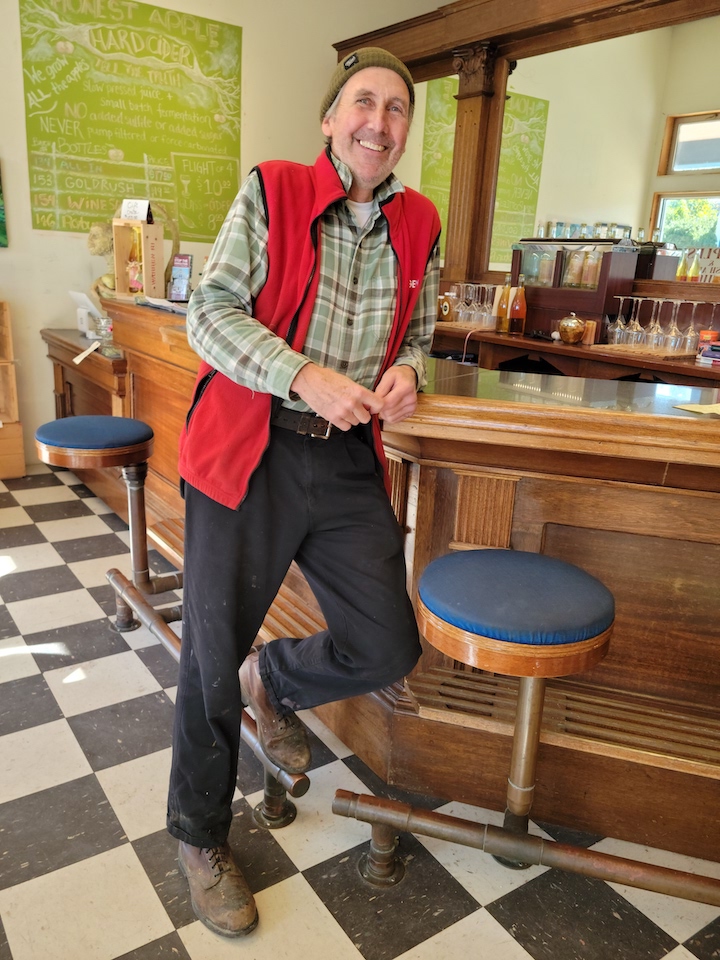
In contrast, Sowams Cider Works of Warren, Rhode Island, makes only enough hard cider that it can produce on the roughly 1,000 trees at its small, three-and-a-half acre orchard.
Formerly known as Warren Cider Works (a trademark dispute forced it to rebrand), the name Sowams honors the native Americans that once inhabited the area now comprising the towns of Barrington, Bristol, Swansea, and Warren, says owner Spencer Morris.
Sowams Cider Works is unusual in two ways: it is one of the few cider-makers that exclusively grows its own fruit. Most of its ciders are made from single varieties among the 70-plus kinds of apples grown at Sowams’ Long Lane Orchard.
Sowams also ages its ciders for an extended period, much like wine. Morris does not even bottle his ciders until a year has passed after the initial fermentation, and then the cider ages in the bottles for at least another year, often longer.
Morris adds no sulfites or sugars to his ciders, using only a champagne yeast. This minimalist approach combined with the quality of each year’s apple crop make his ciders less uniform than commercially produced ones, but he prefers to “let nature do its own thing.” He makes about 30-35 presses each year (his first of the season was this week); the largest is about 160 gallons but many are smaller.
Despite this week’s cold, late-season varieties like GoldRush and Tolman Sweet are still on the trees. When harvested, “they won’t look like much,” he says, but they will be transformed when pressed “and make excellent ciders.”
Morris trained to be an architect and for a time owned a company that made dispensing equipment for the beverage industry before launching his orchard and cidery a decade ago. But apples are in his family. His mother still manages a small orchard started by his grandfather in New York’s Hudson Valley, where Morris grew up.
Like a number of small, artisanal cidermakers — and unlike a large commercial producer like Downeast — Sowams is only available in its immediate locale, at a few area stores but mostly from its storefront taproom, where four active presses, each scaled differently, line the windows.
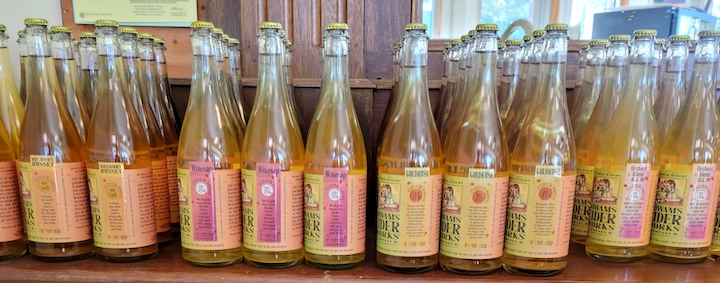
* * *
TODAY’S CIDERMAKERS are reviving a long tradition:
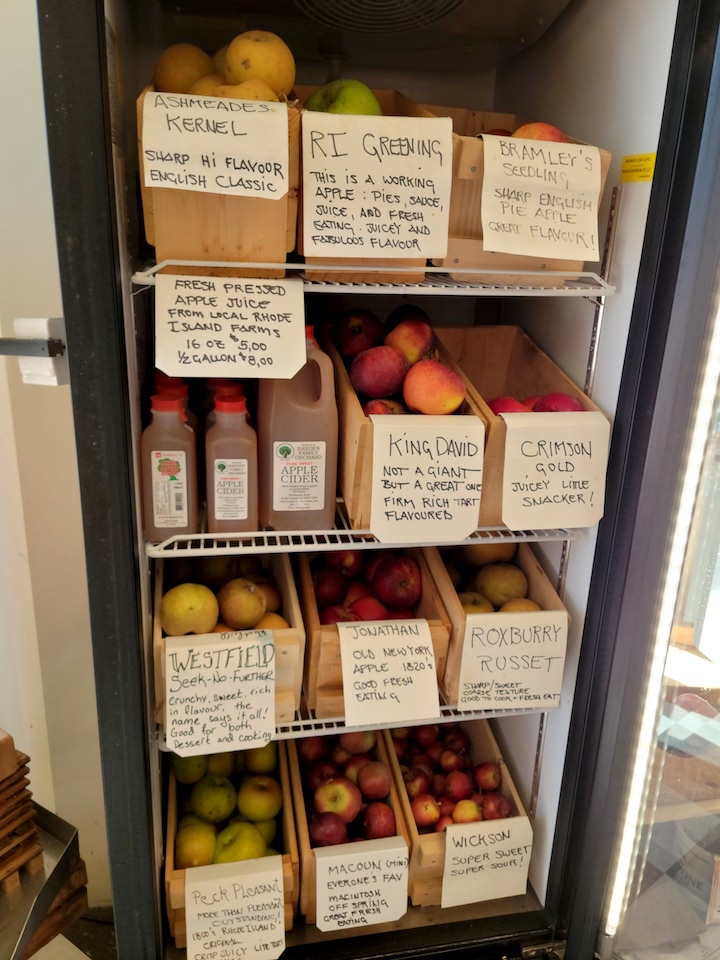
“From Colonial times until the mid-1800s, fresh or hard cider was America’s main beverage. Hard cider was inexpensive and easy to make, it could be stored year-round, and it aged to a pleasant, slightly fizzy, lightly alcoholic drink.
“Cider was sweet, mildly intoxicating, and in some places, safer to drink than water. Everyone drank hard cider, even children and the elderly. Middlesex County, Massachusetts, produced 33,436 barrels of cider in 1764, ‘or seven per family, well over a barrel for every man, woman, and child.’
“Dutch immigrant John Linklaen spoke of ‘superb orchards’ in Vermont’s Connecticut River Valley soon after his arrival in America in 1791. East of the river in Walpole, New Hampshire, John Bellow grew 30 acres of apples in 1805 and made 4,800 42-gallon barrels of cider, or more than 200,000 gallons.
“At the beginning of the 19th century there were good-sized orchards from Worcester County, Massachusetts, to western Connecticut, where small towns like Woodbury had ‘many valuable orchards, so that the making of cider and cider spirits are important agricultural interests,’ according to one report.
“From cider, apples could be distilled into brandy, or applejack, a much stronger drink, and it was widely produced around this time. Torrington, Connecticut, had four cider mills and one brandy still in 1774. Berkshire and Hampshire counties in western Massachusetts produced 265,000 gallons of brandy in 1810. There were as many as 10 distillers of applejack in Newtown, Connecticut, eight in Canton.
“By the mid-1800s, though, hard cider’s dominance began to fade, the target of temperance movements at either end of the century, and supplanted by an inexpensive urban alternative, beer.”
— from Apples of New England
NEW ENGLAND’S cidermakers, as diverse as the orchards that produce the apples they use, are now honoring this tradition but adding to it with new flavors, styles, and methods along the way.
This weekend provides a great opportunity to become acquainted, or reacquainted, with this marvelous, versatile drink at CiderDays and in orchards and taprooms throughout the region.
* * *
SEE HOW FRESH CIDER IS MADE in this short video:
Hot Mulled Cider
2 qts apple cider
¼ c maple syrup or brown sugar
2 t cinnamon
½ t allspice
6 whole cloves
¼ t nutmeg
1 cinnamon stick
Slowly heat to a simmer. Allow flavors to blend for at least 20-30 minutes before serving.
